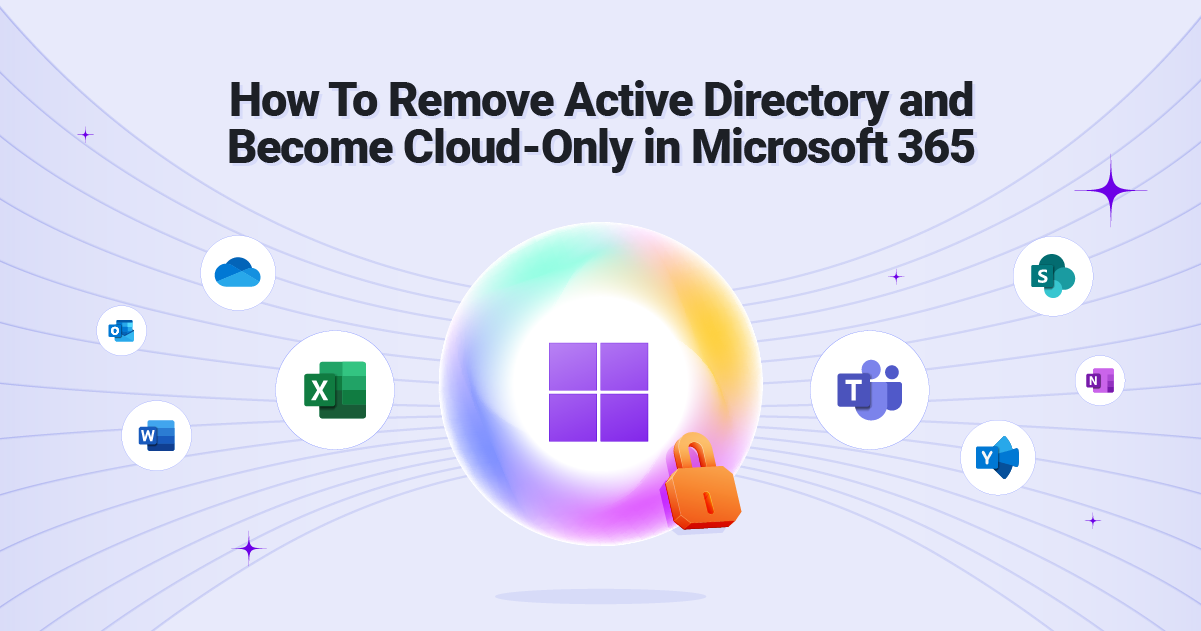
In today’s digital-first world, businesses are embracing cloud technologies to improve efficiency, enhance security, and reduce costs. One of the significant steps in this transition is removing Active Directory (AD) and moving to a cloud-only environment in Microsoft 365. This shift allows organizations to leverage the full potential of cloud-native tools while simplifying IT management.
In this blog, we’ll guide you through the process of eliminating Active Directory, explore the benefits of a cloud-only setup, and share best practices for a successful transition.
What Is Active Directory?
Active Directory (AD) is a directory service developed by Microsoft to manage user access and resources in a Windows environment. It has traditionally been used in on-premises setups to control authentication, authorization, and access to resources. However, as businesses increasingly adopt cloud solutions like Microsoft 365, the reliance on Active Directory is diminishing.
While AD remains effective for hybrid environments, its limitations are apparent for businesses aiming for a cloud-first strategy. Moving away from AD is an essential step toward achieving a truly cloud-only setup.
Why Go Cloud-Only in Microsoft 365?
Transitioning to a cloud-only environment in Microsoft 365 offers numerous advantages, including:
1. Reduced IT Complexity
Eliminating Active Directory reduces the burden of managing on-premises infrastructure. With Microsoft 365, user management, authentication, and resource access become streamlined and centralized in the cloud.
2. Cost Savings
Maintaining on-premises infrastructure, including servers and related hardware, incurs significant costs. A cloud-only model eliminates these expenses, allowing businesses to allocate resources to more strategic initiatives.
3. Enhanced Security
Microsoft 365’s cloud-native security features, such as Azure Active Directory (Azure AD), provide advanced protection against modern threats. Features like multi-factor authentication (MFA) and conditional access policies offer better control over access and identity management.
4. Flexibility and Scalability
A cloud-only setup supports remote work and scalability, enabling businesses to adapt to changing workforce needs without worrying about physical infrastructure constraints.
Steps to Remove Active Directory
Transitioning to a cloud-only environment in Microsoft 365 involves several key steps:
1. Assess Your Current Environment
Start by evaluating your existing IT infrastructure, including on-premises Active Directory, applications, and user dependencies. Identify the critical systems and workflows that rely on AD.
2. Migrate to Azure Active Directory
Azure Active Directory (Azure AD) is the cloud-based identity and access management service integrated with Microsoft 365. Migrate your users, groups, and policies from on-premises AD to Azure AD.
3. Implement Cloud-Only Authentication
Switch from traditional authentication methods to cloud-only options such as passwordless login or multi-factor authentication through Azure AD.
4. Transition Group Policies to Intune
Microsoft Intune is a cloud-based service for managing devices and applications. Transition your group policies and device configurations to Intune for seamless management in the cloud.
5. Decommission On-Premises AD
Once all users, devices, and applications are migrated to the cloud, decommission your on-premises AD infrastructure. Ensure all dependencies are addressed before removing AD.
By addressing these challenges proactively, businesses can ensure a successful transition to a cloud-only environment.
Conclusion
Removing Active Directory and becoming truly cloud-only in Microsoft 365 migration is a transformative step for modern businesses. It simplifies IT management, enhances security, and aligns organizations with a digital-first strategy. By leveraging Azure AD and Microsoft’s robust suite of tools, businesses can achieve a seamless transition and unlock the full potential of a cloud-native setup.
Ready to take the next step in your cloud journey? Contact Exinent today for expert guidance on Microsoft 365 migration. Let us help you streamline your operations and achieve unparalleled efficiency in the cloud.
